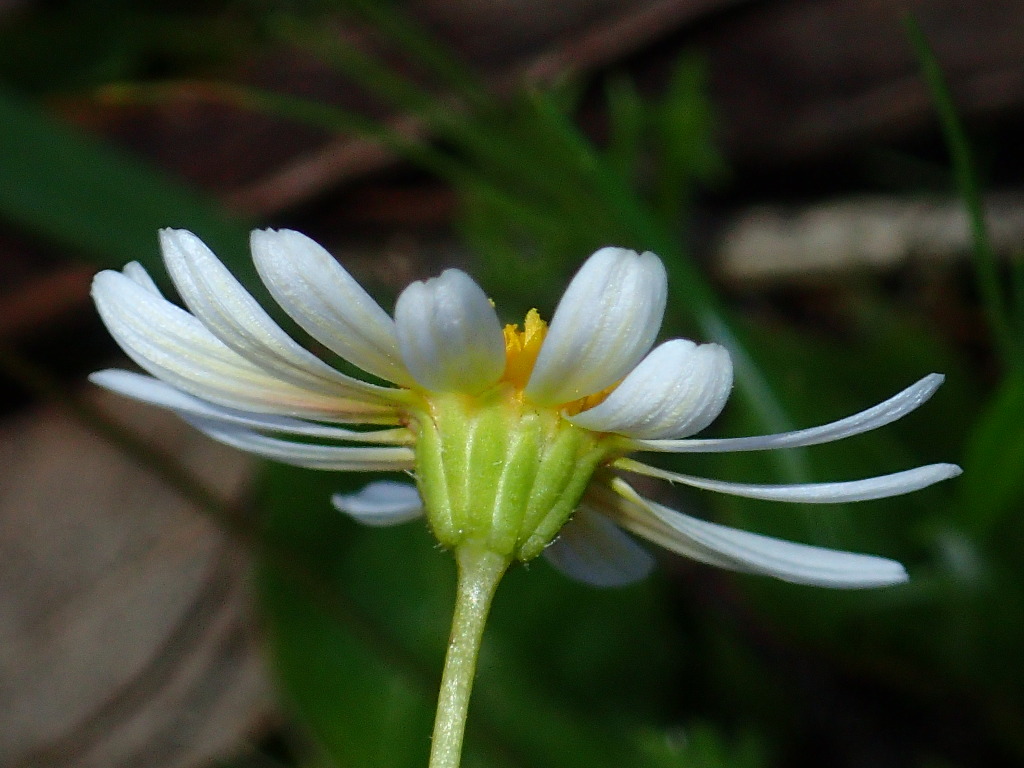Brachyscome debilis
Sond.Ascending to erect annuals, 2–25 cm high; branches green or purplish, with glandular hairs. Leaves entire and linear, or pinnatisect and c. obovate in outline, 0.5–2 cm long, 1–6 mm wide, divided leaves with 3–9, weakly mucronate lobes. Peduncles much longer than subtending leaf; bracts 9–14, c. 1-seriate, c. equal, obovate, 2–3.6 mm long, 0.6–1.4 mm wide, with scarious margins, seemingly glabrous but often with scattered glandular hairs on surface and margins; ligules 4.1–7.4 mm long. Cypselas flattish, obovate, 1.7–2.2 mm long, 0.4–0.5 mm wide, uniformly brown, the lateral faces smooth, glabrous or with scattered hairs; margins glabrous, or wing-like and variably dissected with hairy margins; pappus a white, jagged cup 0.3–0.4 mm long. Flowers mainly Sep.–Nov.
LoM, MuM, Wim, GleP, VVP, VRiv, OtP, WaP, Gold, CVU, GGr, DunT, NIS, EGL, HSF, HNF. Also SA, NSW. Widespread in woodland in central and western Victoria, in habitats ranging from damp mossy hollows in rocks to shallow, rocky, well-drained soils.
Smith-White et al. (1970) noted that the only consistent morphological difference between the 2 named species in this group, B. debilis and B. leptocarpa, was the presence or absence of wing-like margins on the cypselas. They suggested that such differences may have a simple genetic determination. This hypothesis is supported by the fact that the two entities are commonly found growing together and have similar distributions. They are here treated as conspecific.
Short, P.S. (1999). Brachyscome. In: Walsh, N.G.; Entwisle, T.J., Flora of Victoria Vol. 4, Cornaceae to Asteraceae, pp. 835–859. Inkata Press, Melbourne.
 Spinning
Spinning

